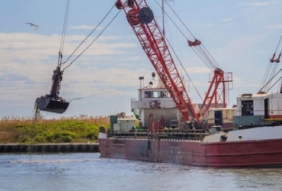
Posted on July 7, 2016
The fifth version of the U.S. Army Corps of Engineers’ Pennsylvania State Programmatic General Permit (PASPGP-5) for authorization of work in wetlands/waterways within portions of Pennsylvania became effective July 1, 2016.
This general permit operates in conjunction with Pennsylvania Department of Environmental Protection’s (PADEP) state regulatory program to protect the aquatic environment, while allowing for reasonable development.
Proposed projects either require Corps review to issue a permit, or a permit can be issued on the Corps’ behalf through PADEP.
Some of the changes from PASPGP-4 to the PASPGP-5 include:
– The portion of the Delaware River that is ineligible for permit issuance has been extended beyond the limits identified in the last version of the permit.
– The impact thresholds include no greater than one acre of impact to aquatic resources (total wetland and waterway); and no more than 1,000 linear feet of stream loss.
– Projects that require Corps review for permit issuance have been redefined for linear projects. The reporting thresholds apply to single and complete projects, rather than the impacts associated with the overall project. Review is required if the single and complete project:
> 0.50 acre of direct/indirect, temporary/permanent impact to waters or wetlands;
> 0.10 acre of permanent conversion of forested or scrub shrub wetland; or
> 250 linear feet of permanent stream impact
– Exceptions to the 250 linear feet threshold includes up to 500 linear feet for activities involving bank stabilization and/or stream rehabilitation, protection and enhancement. There is no linear threshold for activities verified under PADEP’s General Permit-1 for Fish and Habitat Enhancement Structures or projects approved by the Environmental Review Committee.
– Additional criteria for Corps review includes single and complete utility line crossings of water and/or wetlands that exceed 500 linear feet (except overhead lines); and utility lines placed within a jurisdictional area in which the line runs parallel to or along a stream.
– Any activity authorized as a Waiver 2, which includes water obstructions in a stream or floodway with a drainage area of 100 acres or less, no longer automatically requires Corps review. For projects involving greater than 250 linear feet of permanent impact to streams and/or rivers, an application must be submitted to the Corps. This waiver does not apply to wetlands within the floodway. The PASPGP-5 reporting threshold applies:
<250 feet permanent impact: Corps review not necessary
>250 feet permanent impact: Corps review necessary
– If the impacts of a single and complete project and compensatory mitigation for that project exceed the PASPGP-5 eligibility thresholds, the impacts associated with the compensatory mitigation may be authorized through a Nationwide Permit 27.
– Conditions regarding essential fish habitat and Atlantic and Shortnose Sturgeon have been added.
– All projects that result in temporary impacts require monitoring of aquatic resources to ensure restoration. A form for monitoring has been developed for consistency. All temporary impacts that exceed one year require Corps review.
PASPGP-5 will expire June 30, 2021.
Source: US Army Corps of Engineers





